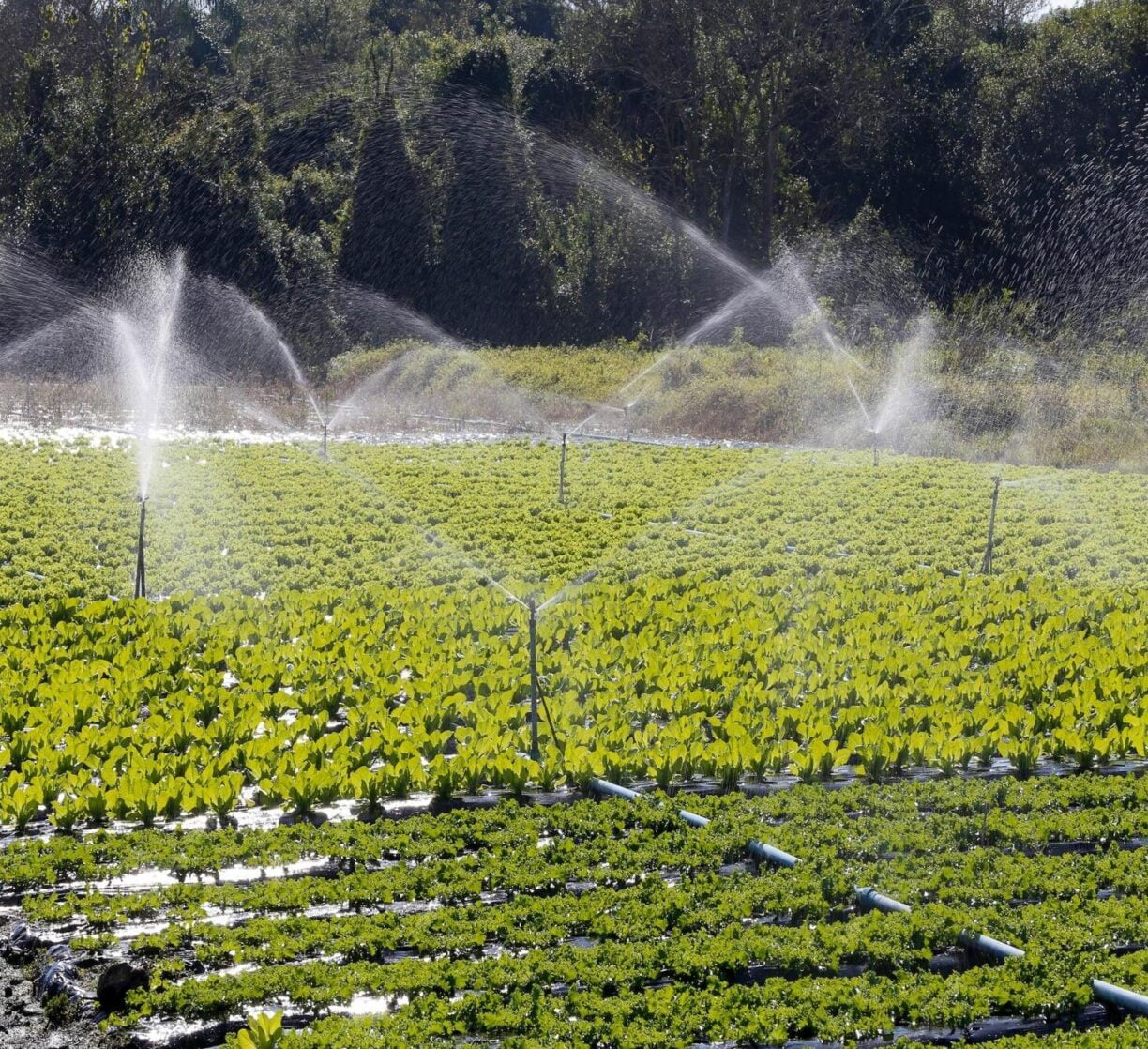Green Revolution in Indian Agriculture
During the planning period, agricultural reform measures led to a remarkable 25 percent increase in grain production in 1967-68 compared to the previous year, akin to a revolution. This surge in production earned the moniker “Green Revolution.” The initiative promoted the use of high-yield seeds, chemical fertilizers, pesticides, and irrigation development. Wheat production saw a substantial rise in the initial phase, followed by a surge in rice production. The Green Revolution aims to boost both agricultural output and productivity, earning nicknames like “seed-water-fertilizer-pesticide technology” or “package program” due to its focus on irrigation, quality seeds, fertilizers, and pesticides.
Read More: Suggestions to Improve Agriculture Production and Productivity
Meaning of Green Revolution
In the words of J.G. Harrar, the term “Green Revolution” signifies the remarkable transformation that unfolded in 1968, revolutionizing the production of food grains in India and continuing to this day.
According to the dictionary, the term denotes a surprising and rapid change leading to progress. “Green” symbolizes the substantial increase in agricultural production stemming from the adoption of new agricultural policies, signifying both a significant uptick in production and its long-term stabilization.
Read More: Agricultural Productivity: Trends, Determinants, and Strategies for Improvement
The agricultural production changes witnessed in 1967-68 surpassed those of the entire 16-year plan period, unfolding with great promise and speed, hence earning the title “Green Revolution.” In India, M.S. Swaminathan is revered as the Father of the Green Revolution for his pioneering work in developing high-yielding crop varieties. In essence, the Green Revolution epitomizes the substantial surge in agricultural production during the sixth decade, catalyzed by the swift introduction of high-yielding seeds and chemicals driven by technological advancements.

Read More: Explain the Importance of Agriculture in India
Features of the Green Revolution
- High-Yielding Varieties of Seeds: Utilizing high-yielding seeds is crucial for boosting Indian agricultural production. Initiated in 1966, this endeavor focused on key crops like wheat, rice, millet, maize, and sorghum. Varieties such as Sona and P-K 18 for wheat and Gaga 101 for maize were introduced by Dr. Norman E. Borlaug, Nobel laureate of 1970. These seeds, first utilized in the Intensive Agriculture District program, significantly increased yields, elevating wheat to approximately 34 quintals per hectare, and rice and maize to about 35 and 32 quintals per hectare, respectively. This seed initiative spurred the Green Revolution, supported by institutions like the Indian Agricultural Research Institute and agencies like the National Seed Corporation. A new seed development policy in 1988 led to a surge in certified quality seed availability from 140.5 lakh quintals in 2005-06 to 320 lakh quintals in 2018-19.
- Chemical Fertilizers: The increased adoption of chemical fertilizers has markedly boosted grain production. In 1967-68, 11 lakh tonnes of chemical fertilizers were utilized, surging to 293.69 lakh tonnes by 2019-20. Additionally, per-hectare fertilizer consumption rose significantly from 19 kg in 1960-61 to 158 kg in 2019-20.
- Irrigation: The expansion of irrigation infrastructure played a pivotal role in facilitating the Green Revolution. By March 2016, irrigation coverage expanded to approximately 49 percent of the total sown area, encompassing 966 lakh hectares of land. Initiatives like the “Pradhan Mantri Krishi Sinchai Yojana,” launched in 2015-16, aimed to further enhance irrigation capacity nationwide.
- Multiple Cropping: Advancements in irrigation systems and quick-maturing seeds facilitated the adoption of multiple cropping practices, enabling the cultivation of multiple crops in a single field within a year. This initiative, initiated in 1967-68, covered 600 lakh hectares of land by 2014-15.
- Credit Facilities: Access to credit facilities has significantly improved for farmers, reducing reliance on high-interest moneylenders. The nationalization of commercial banks in 1969 substantially boosted agricultural credit availability. In 2020-21, a total institutional credit of ₹15,75,398 crore was extended to the agriculture sector, with commercial banks contributing 75.8 percent. This accessibility to affordable credit has empowered farmers to invest in advanced seeds, fertilizers, machinery, and small irrigation schemes, further fueling agricultural productivity.
- Agricultural Research: The Indian Council of Agricultural Research (ICAR) plays a pivotal role in agricultural research and development. Established in 1966, the ICAR has expanded to 71 institutions, including universities and colleges in states like Haryana and Madhya Pradesh. These institutions focus on discovering new seeds, cultivation methods, and pest management techniques.
- Plant Protection: Historically, Indian crops suffered from inadequate protection against diseases and pests, leading to significant losses. However, concerted efforts are now underway to combat crop diseases and pests through schemes like the Integrated Pest Management Scheme (IPMS), Locust Surveillance and Control, and Plant and Seed Quarantine. Additionally, the government has established plant protection centers and pesticide testing laboratories to enhance crop protection measures.
- Marketing Facilities: The improvement of agricultural marketing facilities has enabled farmers to obtain fair prices for their produce, stimulating agricultural development. With over 7,320 regular agricultural markets and access to warehouses and cold storage facilities, farmers can store and sell their crops more efficiently, leading to increased income and investment in agriculture.
- Price Incentive: To mitigate the adverse effects of fluctuating agricultural prices, the government has established the Agricultural Costs and Price Commission, responsible for setting minimum crop prices. Institutions like the Food Corporation of India ensure the procurement of crops at these minimum prices, providing farmers with stability and incentives to boost production.
- Soil Testing: A soil testing program is integral to the success of the Green Revolution. Government laboratories conduct tests on soils from various regions to determine the appropriate fertilizers and seeds for optimal crop yields.
- Crop Insurance: The General Insurance Corporation (GIC), in collaboration with state governments, has developed a crop insurance scheme. Additionally, the government has established the ‘Indian Agricultural Insurance Company’ to bolster insurance coverage in the agricultural sector. Through this scheme, farmers can insure their crops at a nominal premium and receive compensation in the event of crop failure, thus providing a significant boost to agriculture. To further promote crop insurance, the government launched the Pradhan Mantri Fasal Bima Yojana in 2016.

Effects of the Green Revolution
The Green Revolution has made a significant impact on the stage of agricultural development. It has greatly influenced our country’s economy and has proven to be instrumental in shaping the five-year plans. Its main effects include:
- Increase in Production: The Green Revolution has led to a remarkable surge in iron production starting from 1967-68 and continuing in the subsequent years.
Trends in Foodgrains Production (Lakh Tonnes)
| Year | Foodgrains | Rice | Wheat | Pulses |
|---|---|---|---|---|
| 1950-51 | 550 | 226 | 64 | 84 |
| 1967-68 | 950 | 376 | 187 | 121 |
| 1980-81 | 1,296 | 536 | 363 | 106 |
| 1990-91 | 1,764 | 743 | 551 | 143 |
| 2000-01 | 1,968 | 850 | 697 | 111 |
| 2010-11 | 2,416 | 953 | 859 | 181 |
| 2019-20 | 2,975 | 1,189 | 1,079 | 230 |
| 2020-21 | 3,107 | 1,244 | 1,096 | 254 |
Read More: Demographic Features of Indian Population
- Capital-Intensive Farming: The Green Revolution demands substantial capital investment, creating a divide favoring larger landowners with over 4 hectares of land, constituting only 5.3% of India’s agricultural landscape. Consequently, the benefits primarily accrue to these larger farmers, fostering a trend toward capitalist farming.
- Effect on Rural Employment: While mechanization increases, creating unemployment concerns, intensified farming activities boost demand for labor. Despite machinery reducing the need for labor during certain tasks, overall labor demand spikes due to increased crop diversity and fertilizer usage. States like Punjab and Haryana grapple with labor shortages during peak seasons, mitigated partly by increased mechanization.
- Prosperity of Farmer: Green Revolution uplifts farmers’ living standards, transforming agriculture into a lucrative venture. This prosperity stimulates demand for consumer goods, fueling industrial growth.
- Reduction in Imports of Foodgrain: Green Revolution curbs India’s dependence on foodgrain imports, bolstering self-sufficiency and reducing reliance on foreign sources, albeit not entirely eliminating concerns over food scarcity.
- Industrial Development: The surge in agricultural output fuels growth in related industries, witnessing advancements in machinery production, fertilizer manufacturing, and irrigation equipment.
- Price Stabilization: Green Revolution contributes to stabilizing grain prices, countering rapid inflationary trends, and helping maintain affordability amidst population growth.
- Effect on Consumer: The National Sample Survey of 2009-10 reveals that rural households allocated 57% of their income to agricultural products, while urban households allocated 44%. Consequently, fluctuations in agricultural commodity production and prices significantly influence consumer budgets and living standards. The Green Revolution has played a crucial role in stabilizing budgets and elevating living standards for consumers across both rural and urban areas.
- Increase in Trade: Enhanced agricultural production fosters surplus, driving domestic and international trade growth, and facilitating both local and foreign market expansions.
Before the Green Revolution, most politicians and economists believed that the contribution of agriculture to economic development would not be significant because farmers suffering from ignorance and conservatism for centuries would not be able to adopt the new technology and ideology necessary for economic development. But the Green Revolution ended this illusion. Now the politicians and activists of underdeveloped countries are not only dependent on industries to achieve the goal of economic development but have also started giving due importance to agriculture.
Read More: Population Explosion in India: Causes and Sustainable Solutions
Conclusion
In conclusion, the Green Revolution has been a transformative force in Indian agriculture, marked by increased productivity, adoption of modern techniques, and significant socio-economic impacts. Its implementation has led to enhanced food production, improved living standards, and economic growth. As India continues to navigate agricultural challenges, the lessons and achievements of the Green Revolution remain invaluable for sustainable agricultural development in the future.
FAQ on Green Revolution in Indian Agriculture
What is the Green Revolution?
The Green Revolution refers to a period of significant increases in agricultural productivity achieved through the adoption of high-yielding seeds, chemical fertilizers, and modern agricultural techniques, particularly in developing countries like India.
Who is the father of Green Revolution in India?
Dr. M.S. Swaminathan is often referred to as the “Father of the Green Revolution in India” for his significant contributions to agricultural research and the development of high-yielding crop varieties.
What are the Features of the Green Revolution in Indian Agriculture?
The features of the Green Revolution in Indian agriculture include the adoption of high-yielding improved seeds, increased use of chemical fertilizers, expansion of irrigation facilities, promotion of multiple cropping, and modernization of agricultural machinery.
What impact has the Green Revolution made on agriculture in India?
The Green Revolution in India has significantly increased agricultural productivity, reduced dependency on food imports, improved farmers’ incomes, transformed rural economies, and contributed to overall economic development.
What is Crop Insurance?
Crop insurance is a risk management tool that provides financial protection to farmers against crop losses caused by natural disasters, pests, or other unforeseen events.

